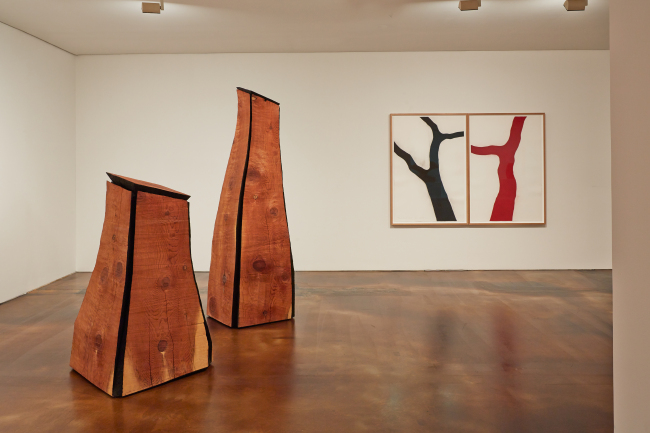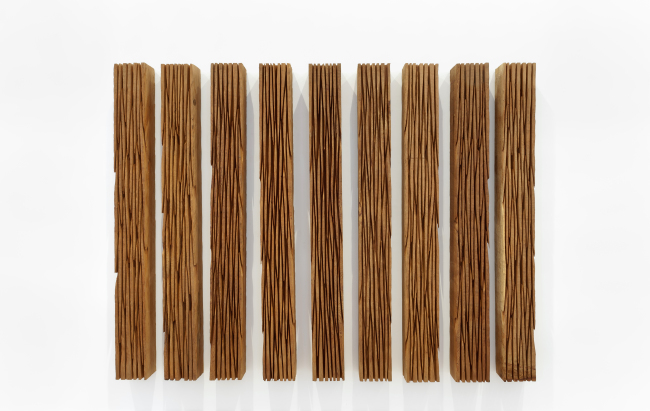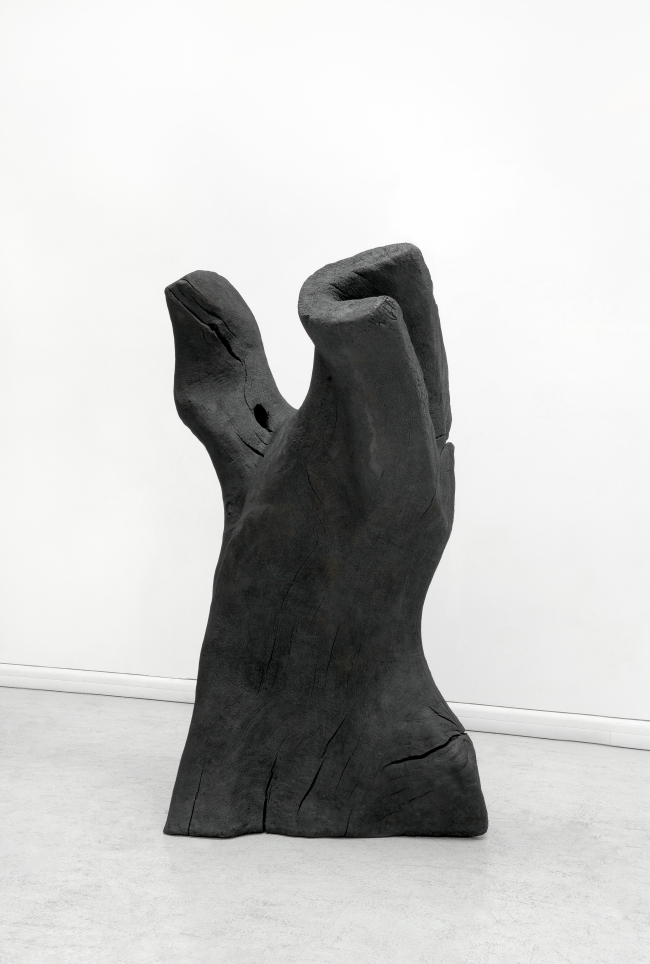Sculptures born out of respect for nature
David Nash showcases wooden sculptures that show ‘time stories’ of trees they are made from
By Lee Woo-youngPublished : Dec. 18, 2014 - 20:34
For artist David Nash, trees are more than sources of material for his sculptures. They represent the life cycle of living beings and have certain characteristics and traits, just like humans.
“Trees are like us. They have life. They grow from a seed, live and die. It took me a long time to realize that trees are not made of wood. A tree is a living being. While trees are alive, every part of trees work to make them alive,” said Nash at the press preview of his solo exhibition at Kukje Gallery on Tuesday in Seoul. “Trees show their time story through their forms.”
Nash is best known for his wood sculptures that are made only with trees that have fallen naturally due to weather or disease. His works have been showcased at major museums and galleries around the world. He was awarded the Order of the British Empire, which recognizes distinguished individuals in arts and sciences and public services, in 2004.
“Trees are like us. They have life. They grow from a seed, live and die. It took me a long time to realize that trees are not made of wood. A tree is a living being. While trees are alive, every part of trees work to make them alive,” said Nash at the press preview of his solo exhibition at Kukje Gallery on Tuesday in Seoul. “Trees show their time story through their forms.”
Nash is best known for his wood sculptures that are made only with trees that have fallen naturally due to weather or disease. His works have been showcased at major museums and galleries around the world. He was awarded the Order of the British Empire, which recognizes distinguished individuals in arts and sciences and public services, in 2004.


The distinct “time story” of each tree is what inspires Nash to sculpt. He studies the cracks caused by weathering, the varying densities of the grain and the growth patterns and starts to sculpt to bring out the images from his mind.
“My choice of what to do with a tree is what the wood suggests to me. That way I have the right piece of wood,” explained Nash, looking at a sculpture made from part of an oak tree and pointing out the natural cracks.
He has learned about wood from working with it since the start of his art career in the 1970s. Now he is able to transform the natural material into forms he pictures. He chooses various sections of trees after the drying process is complete, and creates statement pieces such as his red oak sculpture with natural vertical cuts and beech tree sculpture with horizontal cuts.
His works include bronze sculptures that look like charred wood pieces. With his bronze sculpture “Torso,” he has recreated a natural wood surface. To make his iconic wood tower sculpture, he burned the edges of pieces of wood and then put them together.

The exhibition features pastel and charcoal drawings through which he tried to recreate the wood colors that fascinated him during the sculpting process. The paintings stand as objects with a strong presence like the wood sculptures. The paintings highlight the tree figures and their raw colors. He represents the changes in the colors of trees from pink to orange and to iron red from the point when they were freshly cut to the drying process.
The exhibition continues through Jan. 25 at Kukje Gallery in Samcheongno, Seoul. For more information, call (02) 735-8449.
By Lee Woo-young (wylee@heraldcorp.com)








![[Hello India] Hyundai Motor vows to boost 'clean mobility' in India](http://res.heraldm.com/phpwas/restmb_idxmake.php?idx=644&simg=/content/image/2024/04/25/20240425050672_0.jpg&u=)










